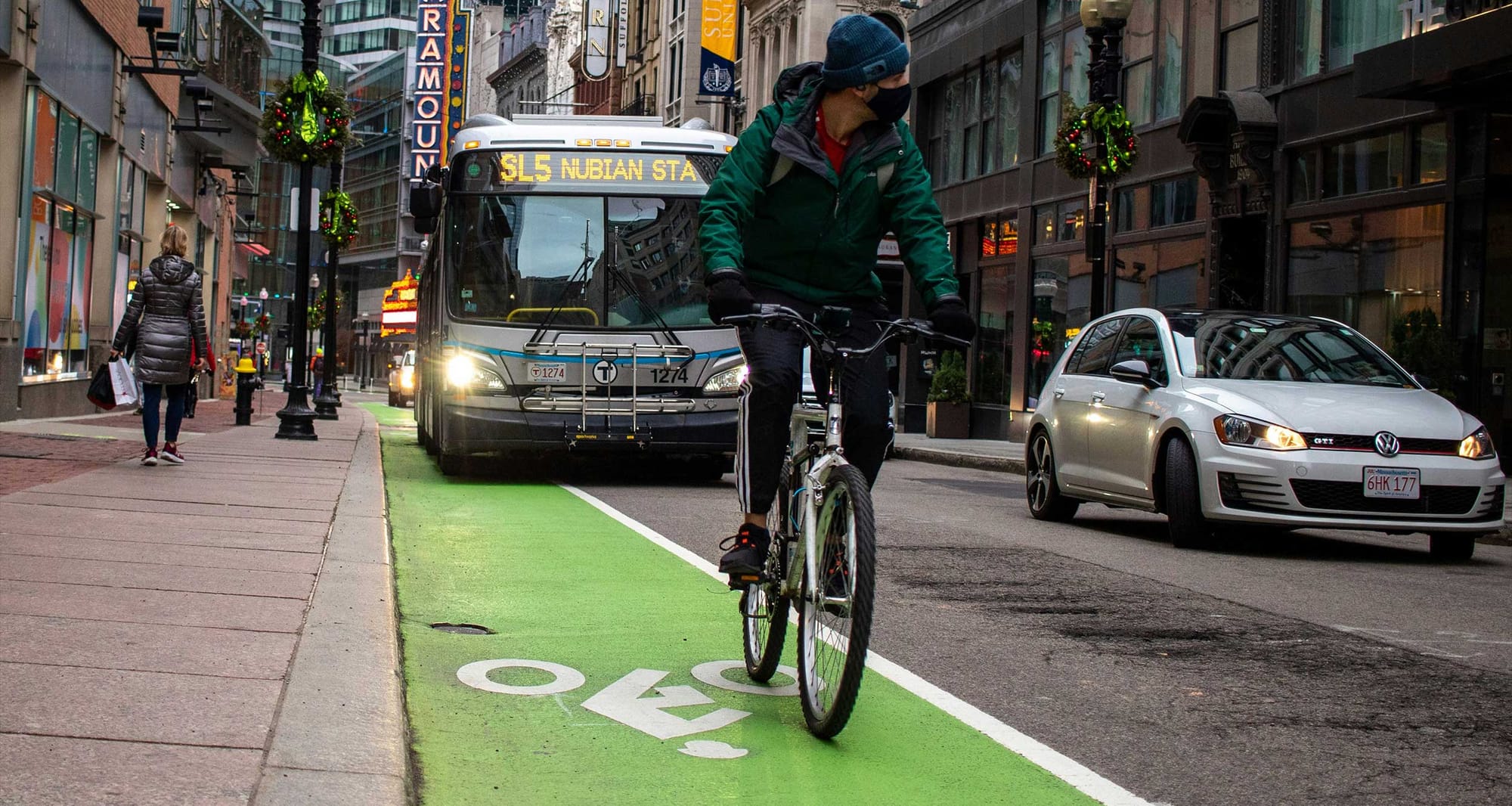
Settlers first made Boston their home in 1625, incorporating it as a town in 1630. The city’s nearly 400-year history is celebrated, with several homes dating to the 1600s, including the historic Paul Revere House which has been made wheelchair accessible. With its long history, Boston has seen many phases of development and expansion, with varied street and sidewalk designs that remind one of a patchwork quit. Some patches of Boston’s sidewalk quilt are much more (or less) accessible than others.
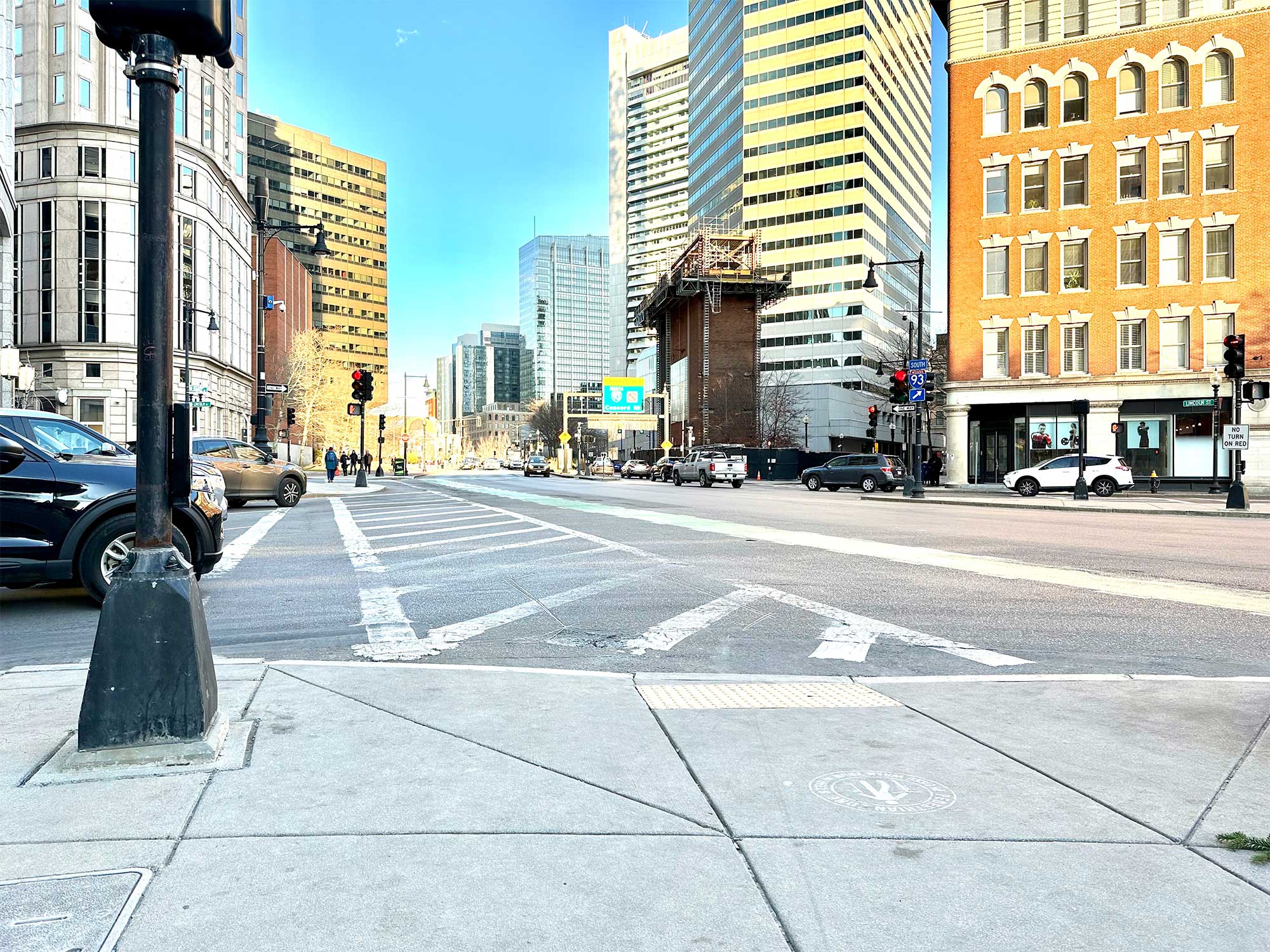
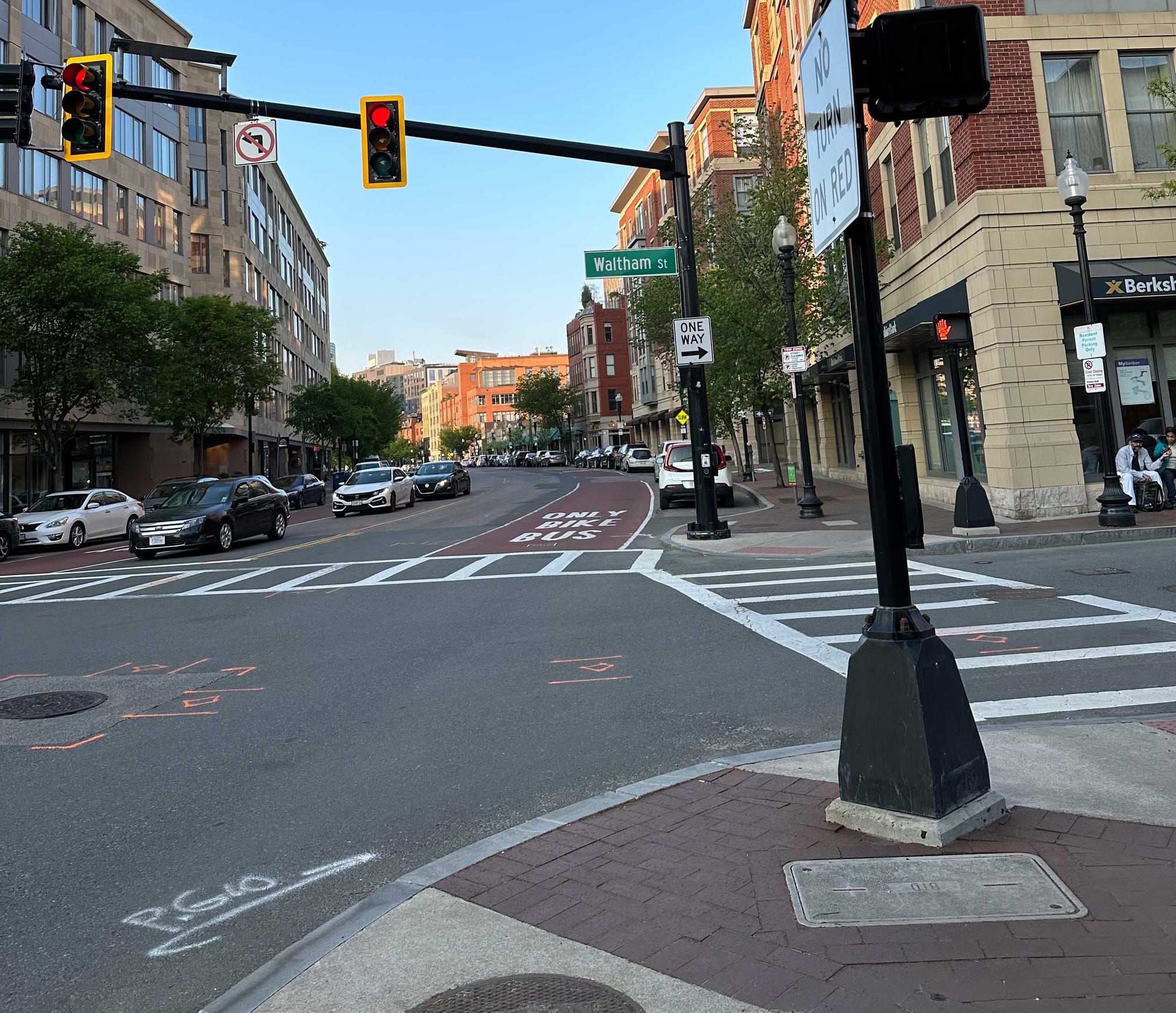
The majority of crosswalks at major streets feature highly visible pathways, curb ramps and visual and audio indicators. In some of the most high-traffic areas of Boston, the city has banned right turns on red for vehicles and, in some cases, has instituted “exclusive phasing” for pedestrians. Exclusive phasing periods stop all vehicle traffic and permit pedestrians to cross in all directions or diagonally, making the roads safer for everyone but especially wheelchair users and other pedestrians with disabilities.
Throughout the city, curb ramps provide access to most sidewalks, but only about half meet the standards outlined by the Americans with Disabilities Act. In 2021, a settlement was reached in the class action case of Muehe, et al. v. City of Boston, in which the city agreed to construct or upgrade at least 1,600 curb ramps per year until every corner at a pedestrian crossing has an ADA-compliant curb ramp.
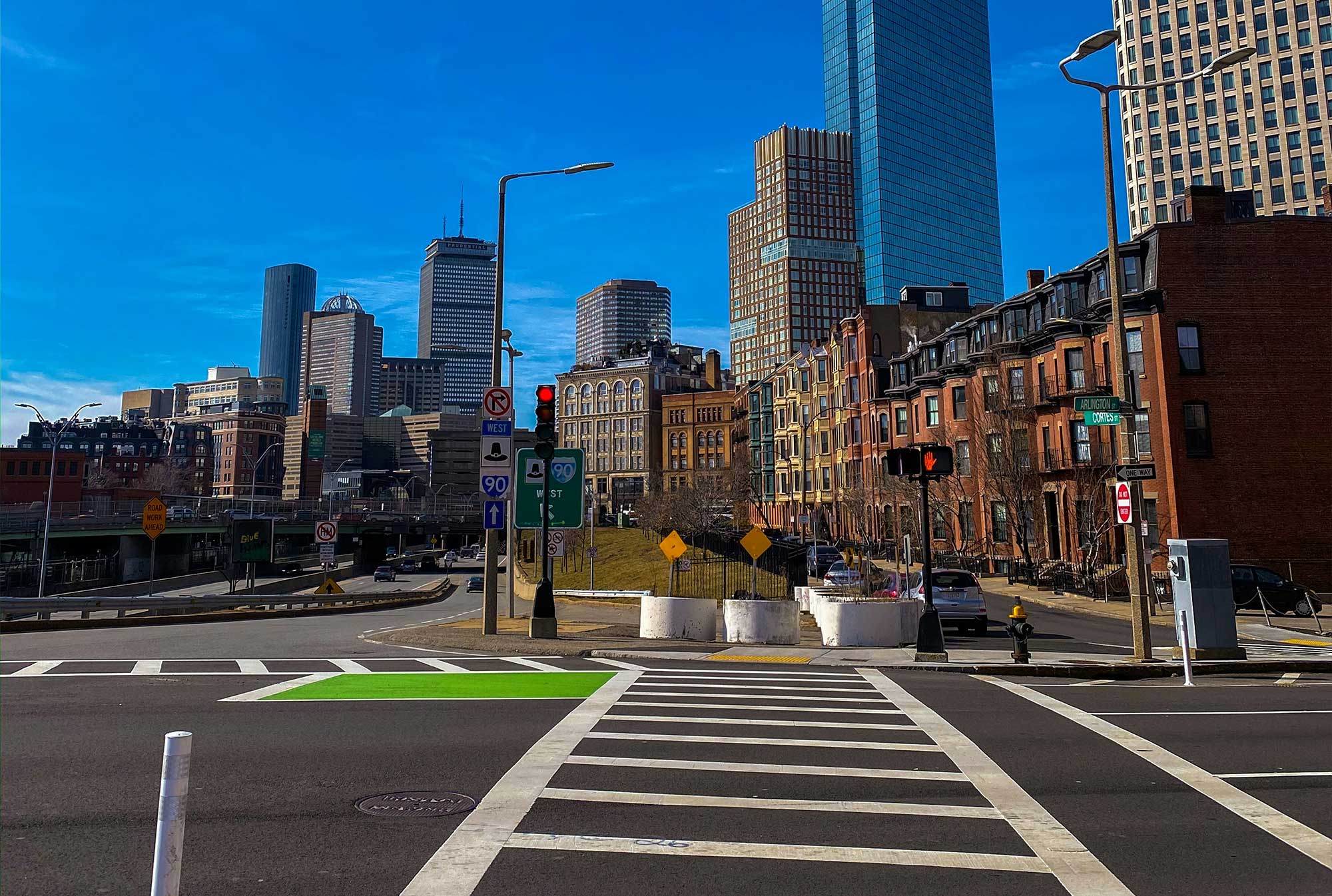
New and updated curb ramps and crosswalks are appearing all across the city, with investments directed first to places with the most pedestrian traffic and where disabled people are most impacted. Residents are also empowered to report sidewalk issues via the ADA Curb Ramp Request Form, with the city aiming to remediate the issues reported within one year of submission. Some intersections are still left without curb ramps, which undoubtedly leads to frustration.
With disability advocates across the country seeking redress for sidewalk inaccessibility, the consent decree issued in Boston and the steps the city is taking to address it are very encouraging — a model, perhaps, for the nation. One would hope the city’s attention might also turn to the surfaces of sidewalks themselves, many of which are littered with uneven pavement and potholes, as a curb ramp to an inaccessible pathway does little good for wheelchair users.
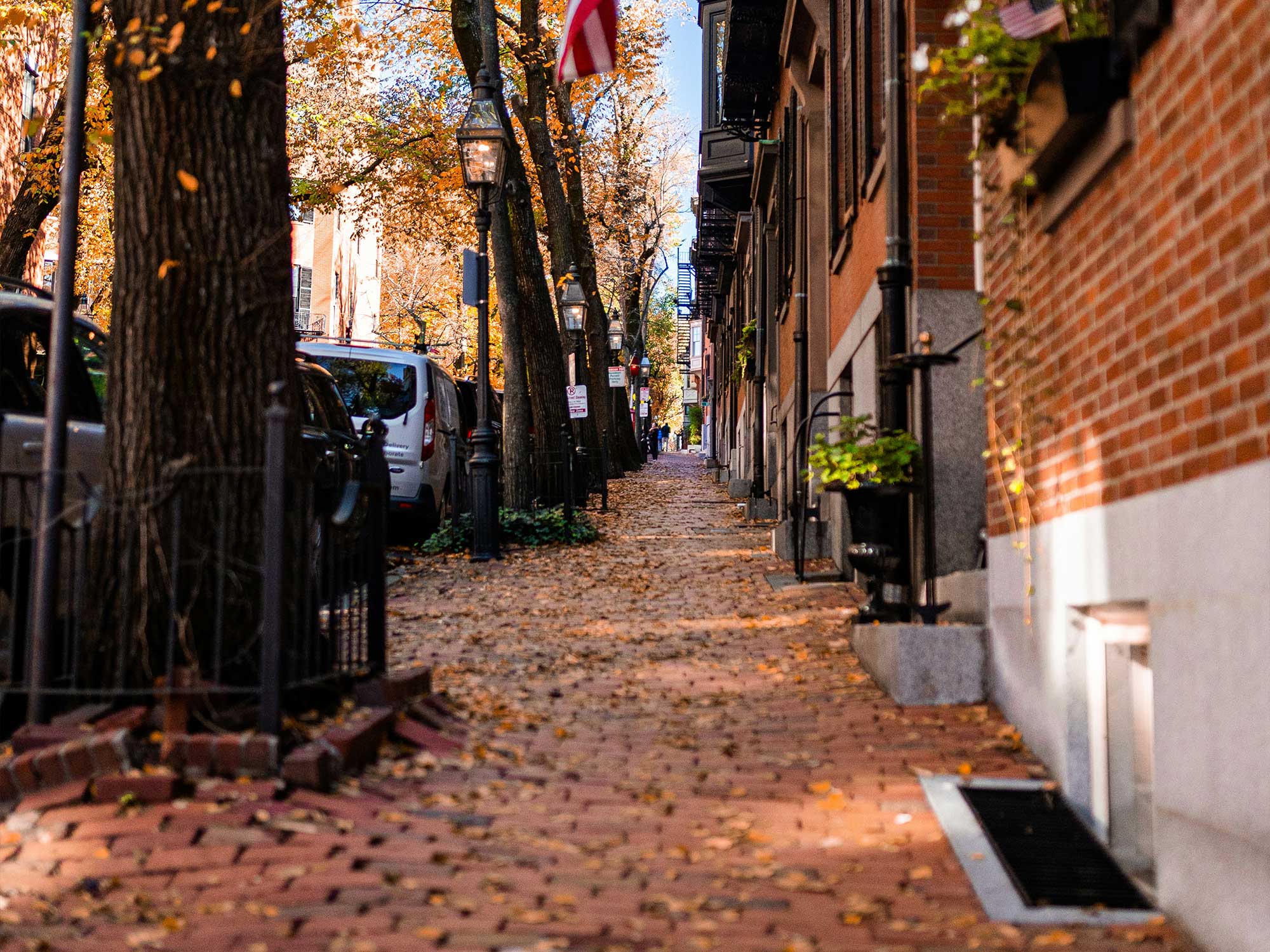
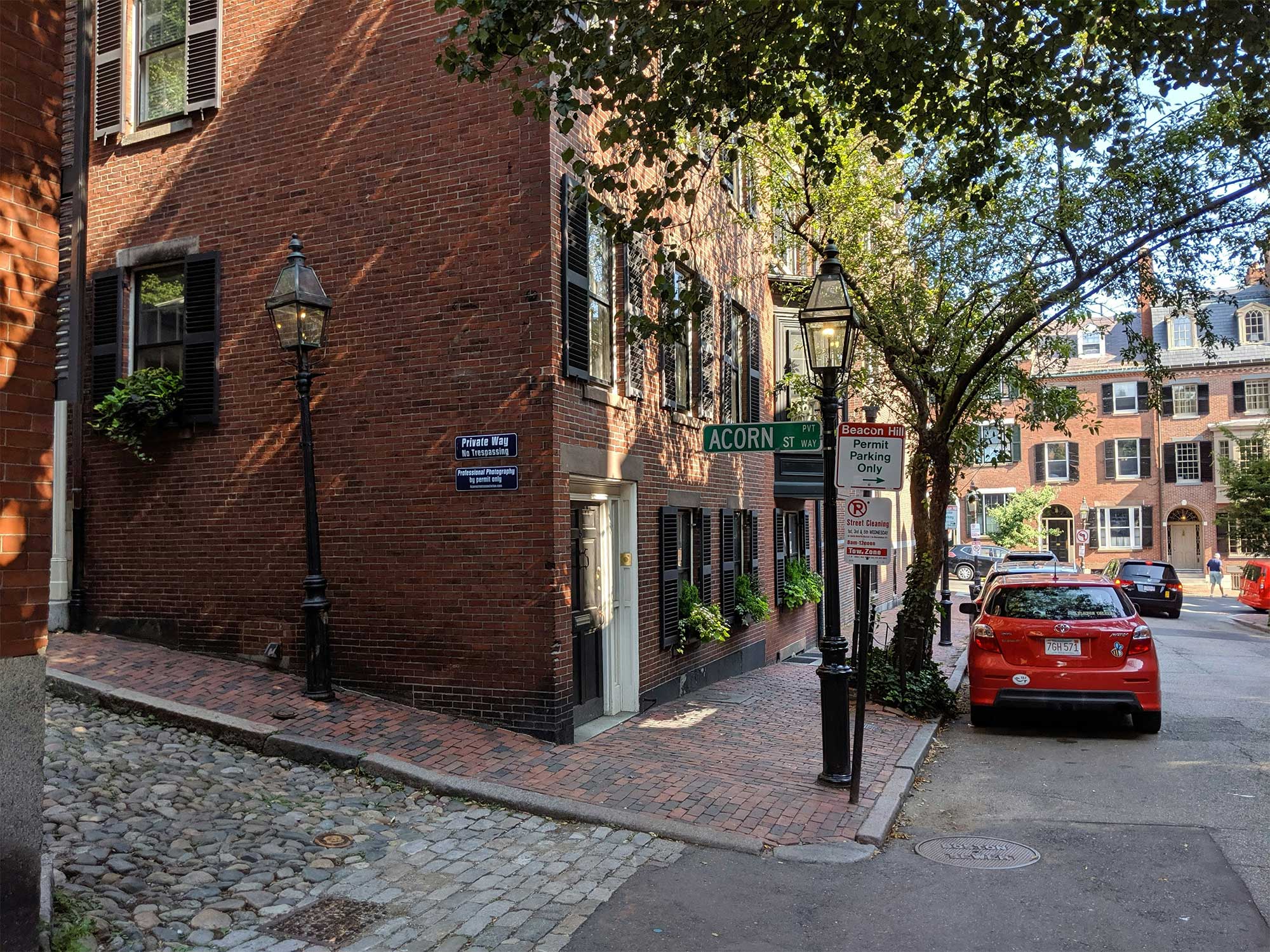
While the majority of Boston sidewalks are concrete, some neighborhoods, including the historic North End and Beacon Hill are dominated by brick pathways. On some streets, stone is also common. Historic neighborhoods may pose additional accessibility barriers, including narrow sidewalks, some of which are not accessible to wheelchair users.
The most photographed street in Boston, Acorn Street, is paved with rough cobblestones and flanked by steep brick sidewalks that are far too narrow for wheelchair users. The street is an inaccessible one, but the inability to access it from a wheelchair only limits users from reaching the row houses perched there. And, while it is important that there be Equal Access Everywhere, it is worth pointing out that these extremes are not indicative of the city as a whole.
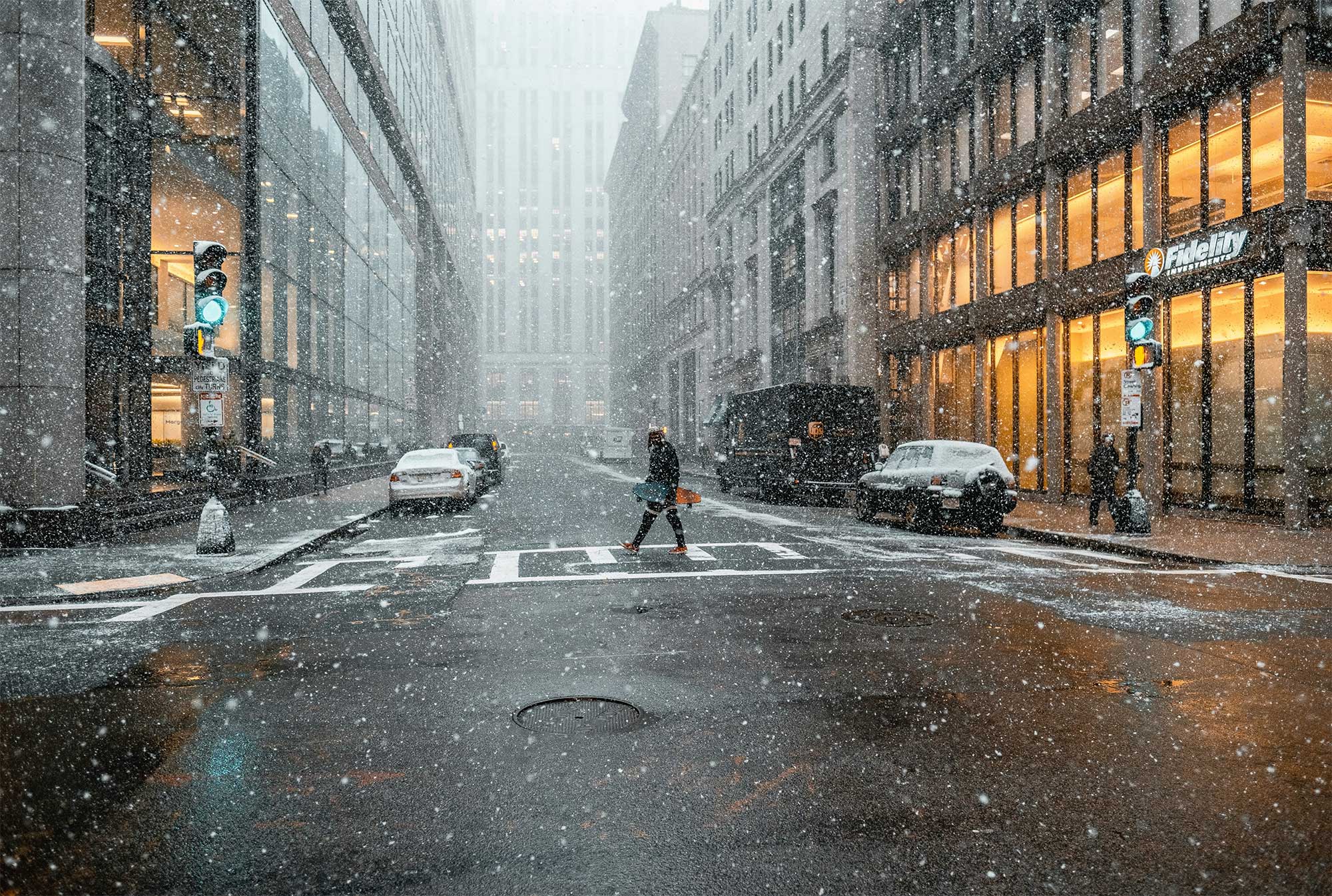
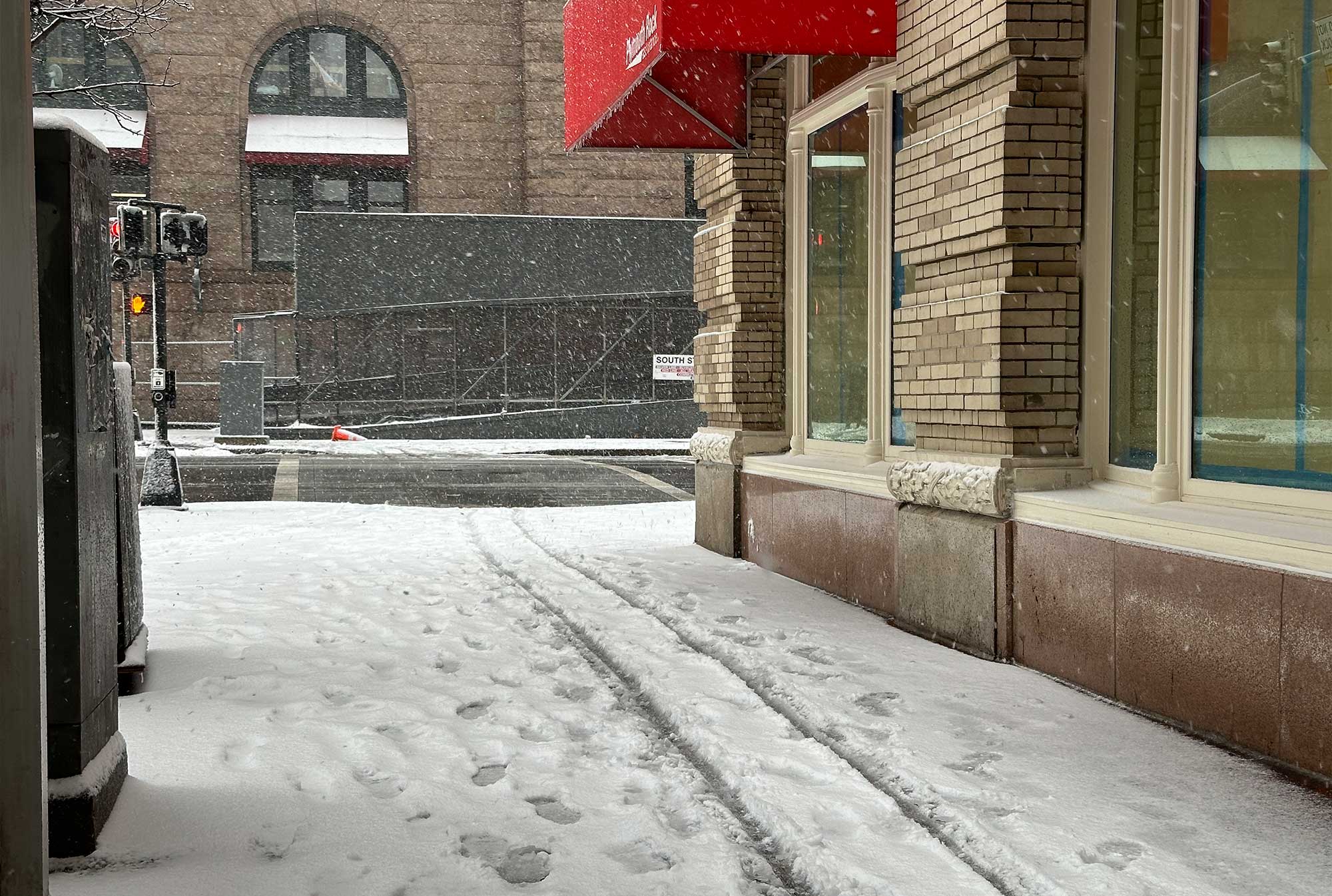
Winter weather impacts the condition of sidewalks in the northeast and, even in Boston’s downtown core, the sometimes harsh winter conditions have made the surfaces of many sidewalks rough and uneven. Coupling freezing weather, rain and snow with aged concrete and brick surfaces leads to damage and degradation. While few streets are actually Impassable, wheelchair users are unlikely to find a smooth roll in many areas.
At the time winter weather does strike, especially during a declared snow emergency, the city’s public works department jumps into gear to clear snow and other debris. The city’s rules for clearing snow are described below:
Property owners must fully clear snow, sleet and ice from sidewalks and curb ramps abutting the property within three hours after the snowfall ends, or three hours after sunrise if the snow ends overnight. Curb and pedestrian ramps to the street should be cleared fully and continually over the duration of the storm to ensure accessibility for individuals with disabilities. If the storm lasts for an extended period of time, property owners are asked to continually check and clear ramps abutting their property.
In my experience, the public works department has done a good job in taking care of streets and sidewalks on snow days, salting roads and clearing curb ramps, especially downtown and in areas close to tourist sites. Unfortunately, during snowstorms, wheelchair users must rely on businesses and residents to do their part in taking care of their own sidewalks. There is no such thing as completely barrier-free when it is snowing. Wheelchair users rolling around the city in the snow will encounter impassable snow drifts and unshovelled sidewalks, however there is typically an alternate route around such barriers — just make sure to pack some extra energy to take on the challenge.
It is important to note that this is not intended to be an article which considers the accessibility of every sidewalk in Boston. This travel guide is written for tourists. Sidewalks are in a far better state of repair around many of the most popular wheelchair accessible attractions in Boston. Wheelchair users visiting Boston will find the city to be accessible and accommodating, where investments in accessibility features and pedestrian corridors like the Rose Kennedy Greenway have made it possible to explore the city on foot or using a wheelchair.



